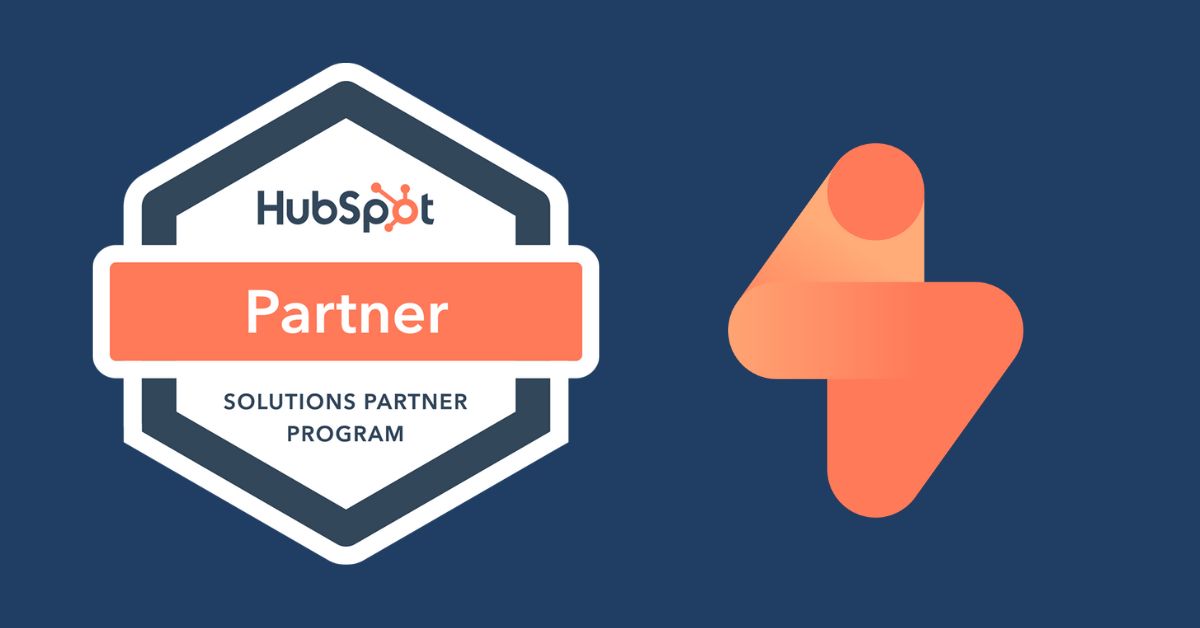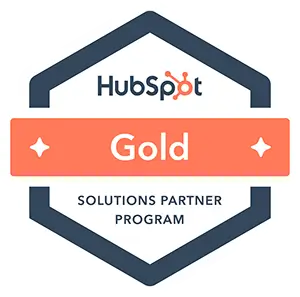HubSpot CRM is an innovative solution for customer relationship management, offering a multitude of features to optimize customer interactions and effectively manage the entire sales cycle. This CRM (Customer Relation Management) software is designed to adapt to businesses of all sizes, offering both interesting ease of use and advanced features capable of meeting the most complex needs.
Key Features of HubSpot CRM
HubSpot's CRM software stands out for several key features, aimed at maximum effectiveness of marketing, sales and customer service strategies:
- Customer Interaction Tracking : HubSpot CRM automates the recording of all customer interactions, including emails, calls, meetings, and notes. This functionality allows all important information to be centralized, allowing sales teams to better understand and respond to customer needs.
- Lead and opportunity management : CRM also allows for effective tracking of potential customers throughout the sales journey, providing visibility into each lead, its probability of conversion, as well as the actions necessary to move it forward.
- Automation of sales tasks : Its use also simplifies repetitive sales tasks, helping teams focus on building stronger relationships with customers. This includes automatically assigning tasks, sending follow-up emails, and creating multiple types of reminders.
- Reporting and Analytics : The platform also offers customizable reports and intuitive dashboards, providing valuable insights into sales performance, marketing campaign effectiveness, and ROI.
Contact management in HubSpot CRM
With its advanced and comprehensive solution for contact management, HubSpot CRM is designed to maximize the efficiency of customer interactions and personalize the customer experience to a higher level. To achieve this, several specific elements are put forward by the platform.
Storage and access to detailed information
Contact management in HubSpot CRM starts with its impressive ability to store information about each contact. This goes well beyond basic information like name, email address and phone number. It is possible to record specific details such as communication preferences, personal interests, purchase history, and even social interactions. Each interaction with the customer, whether it occurs on the web, by email, or during telephone calls, is carefully recorded and always remains accessible in the contact profile.
Complete interaction history
A crucial aspect of contact management in HubSpot CRM is comprehensive tracking of interaction history. This includes all communications, transactions, responses to marketing campaigns and even survey responses. Having such history at hand allows sales and marketing teams to deeply understand the customer journey, recognize sales or service opportunities, and personalize future interactions.
Advanced contact segmentation
Advanced segmentation in HubSpot CRM is another aspect of this powerful tool, particularly useful for targeted marketing campaigns and personalized sales strategies. It allows contacts to be subdivided into different groups, based on a variety of criteria such as on-site behavior, email engagement, demographics, and even lead scores. This segmentation allows you to create highly targeted and relevant campaigns, increasing the chances of conversion and customer loyalty.
Using data for marketing and sales
With the data collected and stored in the CRM, it helps to develop more effective marketing strategies and more personalized sales approaches. For example, it is possible to use information about customer preferences and interests to create tailored marketing messages. Likewise, data on past interactions and purchasing behaviors helps sales teams better understand customers' specific needs, enabling them to offer relevant, tailored solutions.
Team collaboration features in HubSpot CRM
Another benefit of HubSpot CRM is the facilitation of team collaboration, which represents an essential functionality in a world where synergy between departments is crucial for business success. To achieve this, HubSpot CRM integrates various tools designed to strengthen collaboration and exchange between marketing, sales and customer service teams. Here is a complete overview of the most important features in this sense.
Sharing notes and internal communication
One of the key aspects of promoting good collaboration is the ability to share notes and relevant information between team members. This may include details of customer interactions, insights gained during meetings, or observations relevant to the sales cycle. This sharing feature ensures that all crucial information is accessible to all relevant members, promoting common understanding and effective follow-up for customers.
Task planning and assignments
Scheduling and assigning tasks in HubSpot CRM is another great example of what's vital to team collaboration within your company. With this feature, managers can assign specific tasks to members of each team, such as tracking leads, responding to customer inquiries, or achieving marketing goals. This division of tasks provides more structured project management by ensuring that each team member knows what they need to do, and when they need to do it.
Joint management of sales pipelines
Sales channel management in HubSpot CRM is another feature that promotes collaboration. Sales teams can track the progress of leads and opportunities through different sales stages. This shared visibility allows teams to better coordinate their efforts, identify areas requiring attention, and work together to advance deals.
In summary, HubSpot CRM is purpose-built so that marketing, sales, and customer service teams can collaborate effectively. For example, the data collected by marketing teams during campaigns can be used by sales teams to better understand the targeted potential customers. Likewise, feedback and insights gathered by customer service can in turn inform marketing and sales strategies, ensuring a consistent, customer-centric approach.
Data integration and reporting in HubSpot CRM
Data integration and detailed reporting are two important aspects of HubSpot's CRM platform. They allow users to benefit from great visibility over all businesses, in addition to collecting information on key indicators essential to business activities. This Hubspot feature greatly contributes to informed decision-making, better understanding of performance and optimization of strategies.
HubSpot platform data integration
Thanks to its ability to harmoniously integrate data from its various modules, HubSpot CRM software enables very useful features for users. Indeed, all information from marketing, sales and customer service is centralized in one place, providing an overview of the customer journey. This data integration therefore allows you to monitor customer interactions in their entirety, from the first marketing interaction to conversion into a loyal customer.
Creation of custom reports
Another valuable feature of HubSpot CRM is allowing users to create custom reports. This option is particularly useful for meeting specific needs, providing precise insights into sales, marketing trends, and overall campaign performance. By selecting the most relevant data to include in reports, it then becomes easier to focus on the KPIs that actually matter for your business goals.
Monitoring and analysis of sales performance
Once this data is collected, it becomes important to be able to use it wisely. Monitoring and analyzing sales performance through HubSpot CRM therefore represents crucial functionality for any type of business. Sales dashboards help provide a comprehensive, real-time overview of the sales pipeline, including the number of leads, current opportunities, and potential revenue.
Conversion analytics, in turn, help understand where potential customers may be stuck in the sales process, helping teams effectively guide these prospects to conversion.
Sales Forecast
Sales forecasts available in HubSpot CRM provide visibility into potential revenue for the future. Based on sales history and current data, teams can estimate expected revenue for the next few months, quarters or years. This functionality becomes particularly valuable for strategic planning stages as well as financial decision-making.
Customizing and adapting the CRM in HubSpot
Through its CRM , Hubspot opts for an approach where personalization and adaptation are priority points, allowing companies to configure the platform to more precisely meet their specific needs. This extensive customization also covers several essential aspects:
Customizing contact fields
This feature allows businesses to customize contact fields to capture specific information that is critical to their business. The level of personalization offered here goes well beyond basic fields such as name and email address. Indeed, it also includes the possibility of creating custom fields to record unique details. For example, for an e-commerce business, it might be interesting to add a specific field to track product preferences for each customer.
Creating filtered views
Creating filtered views is a powerful feature that allows teams to view only the data relevant to their work. Users can set custom filters to display specific subsets of contact data. For example, a sales team might choose to create a filtered view to only show leads that are late in the sales process, simplifying their follow-up and conversion work.
Configuration of sales processes
Sales process configuration is another key component in the strong customization capability offered by HubSpot CRM . Businesses using the platform can define and customize specific stages of their sales process, exactly reflecting how they manage leads and opportunities. By operating in this way, we can therefore say that the CRM truly aligns with the unique sales methods of each company.
Customizing contact properties
HubSpot CRM also offers the ability to customize contact properties. In other words, this means that companies have the option to indicate which information is priority and necessary for their business.
A B2B company, for example, might choose to emphasize properties like company size and industry, while a B2C company might instead choose to focus on data like product preferences and location.
Automation options in HubSpot CRM
Thanks to its advanced automation options , Hubspot CRM is able to significantly simplify and accelerate the sales and customer service processes of the companies that use it. This automation indeed represents a determining element in improving operational efficiency and optimizing customer relationship management.
Let's explore each of the automation options offered by HubSpot CRM in more detail.
Automated workflows
Automated workflows, also called automated workflows, are at the heart of automation in HubSpot CRM . These allow businesses to create sequences of actions that trigger automatically in response to specific triggers.
For example, when a potential customer completes a form on the website, a workflow can be triggered to automatically send a thank you email, offer that person other relevant content, in addition to notifying the team of selling the interest of this lead. This automation ensures a quick and consistent response to customer interactions with your content on the web.
Automatic email responses
As mentioned earlier, HubSpot CRM also allows for a series of automatic email responses, which is particularly useful for lead tracking and customer communication. These automatic responses can be configured to be triggered based on certain customer actions, such as opening an email or downloading content for example. This function allows you to maintain continuous communication with customers, even outside your company's operating hours (evenings, weekends, vacation periods, etc.).
Automated tasks
Automated tasks are another representative aspect of the great automation capacity of Hubspot CRM . This option allows businesses to configure tasks that are directly assigned to team members, based on certain conditions.
For example, when a prospect reaches a certain qualifying score, a task can be created so that a team member can take over following up. This automation ensures that leads are always managed proactively, without the risk of forgetting any in the process.
The Benefits of Hubspot CRM Automation
By integrating these different advanced automation features, HubSpot CRM aims to optimize the operational efficiency of companies. By automating repetitive tasks and even faster responses to customer interactions, businesses can save valuable time and resources. In addition, proper use of these functions helps eliminate certain potential human errors, for the highest quality customer relationship management.
But what sets HubSpot CRM even more apart is its ability to offer automation tailored to the specific needs of each business. Workflows, auto-responses, and automated tasks can all be customized, fitting each company's unique processes. This advantage allows for better alignment between business objectives and internal processes.
Conclusion
In conclusion, HubSpot CRM proves to be much more than just a customer relationship management platform. It is a powerful tool that revolutionizes the way businesses can interact with their customers, in addition to optimizing their business processes and enabling them to achieve their growth goals faster.
Data analysis, detailed reporting and advanced performance monitoring features help businesses make informed decisions and optimize their strategies. Automating repetitive tasks improves efficiency, while personalization ensures relevant communication with customers.
With such a customer-centric approach and a comprehensive suite of practical features, we can therefore conclude that HubSpot CRM offers an invaluable competitive advantage for its users, truly allowing them to transform their approach to customer relationship management.
















